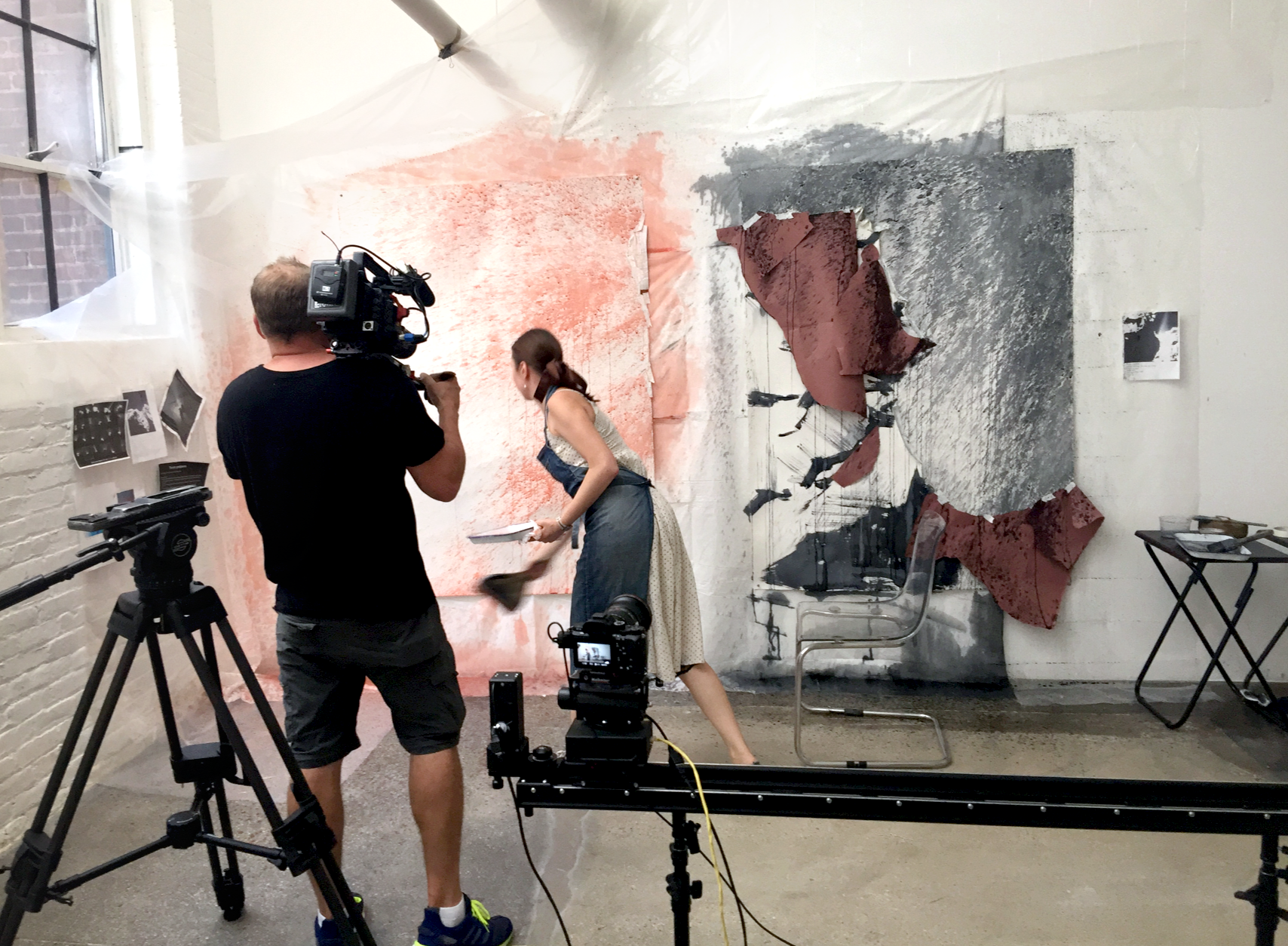When I heard that the Discovery Channel wants to visit my art studio, I was puzzled. When later I asked what made them do it, the answer was that I am that artist who bases the work on the scientific data, collected during the Rosetta mission of the European Space Agency. At that moment talented documentary film-maker Shelley Ayres was working on the 2nd film about the Rosetta mission and was looking for non-scientists who got inspired by the mission.
When the visit was arranged to my temporary art studio, kindly provided by MANA Contemporary, I was blown away with the level of professionalism and the attention to details that Shelley and her cameraman Mark Foerster presented. Impressive equipment, efficiency of actions and many other factors were pointing out that this is a pro team!
The focus of this filming was to see my creative process from the beginning to the end. What made me work on this project and how I approach it? My project 67P is based on the photography by the instruments on board of Rosetta spacecraft, that was exploring the comet. A research has been done and I started with creating special water that was close in amount of D2O to the comet's water consistency. Mark was already setting up one of his cameras focusing on the bubbles that were produced by the electrolysis, my way to enrich water with Deuterium.
Shelley told me that the landing site of the spacecraft was already announced and in preparation for the Rosetta finale we both chose this to become one of the paintings. For the second subject I chose a study of 67P vapor in red color wave length, thinking of spectroscopic analysis by OSIRIS.
A fancy camera on a rail that takes pictures in time laps was set up a few yards from my canvas and I was ready to start. Mixing my pigments with the generated water and the 1st splash to the paper... A few hours of work, mixed with interviews while waiting for paper to dry. Both of the paintings were developing fast. Even though, I must say, that performing in front of the camera makes the experience different. I had to be aware of where the camera is and what should I be doing at any particular moment. My actions were sometimes guided. At times I would not hold a brush this way or wouldn't splash that way as I would normally. But overall paintings came out just fine. I was able to bring them to the final stage later on after the filming.
In the evening of the 1st day I had my studio open. The guests were invited to observe complete 67P work and see the creative process as well. The conversation about the relationship of art and science was held. For the 1st time I demonstrated my augmented reality in front of the audience (an extension of this project, based on the spectroscopic data by OSIRIS instrument). An expression of amazement and excitement that followed next, made me think that I am on a right track. We even compared the smell of the comet 67P (a collaboration project with the Open University, UK) with the smell of Moon that was brought by one of my guests.
Just 2 days before the finale of Rosetta mission a full feature short film of this studio visit was streamed on the Discovery Channel, Daily Planet show. I am so fortunate to meet these amazing dedicated to science film-makers who work hard, travel a lot with heavy equipment, spend hours to make a few minutes long films empowering other people to shine for a brief time, and their work, there for, is shared across the world.
Study more about Shelley Ayres and Mark Foerster.
Special thanks to Denise Kimmel, Discovery Channel producer, who put this film together.





